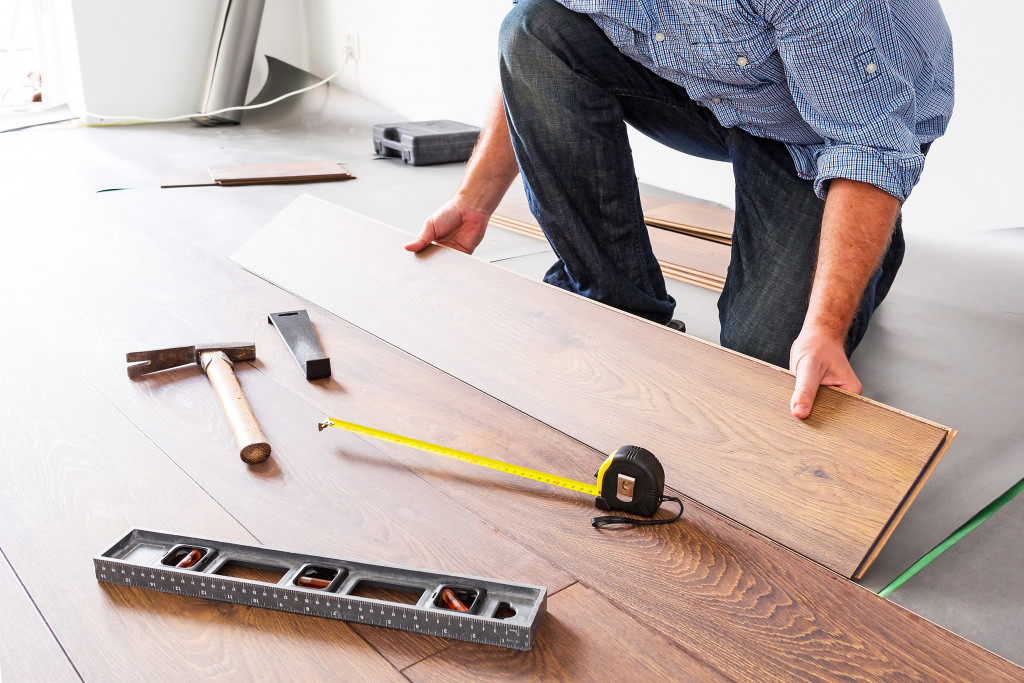Renovating your home can be a great way to turn it into the space of your dreams and increase its value. Your family and friends will enjoy the fresh look and feel of your new home. However, renovating comes with a lot of waste and often generates increased energy consumption. If you’re looking for ways to reduce your environmental impact when renovating your home, here are some tips for you.
1. Recycle Your Waste
There’s bound to be a lot of waste when you’re tearing down walls or removing old furniture. Make sure that all materials are recycled wherever possible. Check with your local recycling center to see what they will accept, as many will have specific rules or regulations regarding renovation waste. It’s also worth checking whether any construction companies in your area offer a recycling service. This can save you time and money as they may take care of the whole process.
When recycling isn’t possible, look into donating any usable materials. Charities and furniture banks may be able to make use of them. You could also see if there’s a local reuse or building materials exchange where other people can benefit from your leftover materials. These are often free to join or only charge a small fee.
2. Work With Green Contractors
When you’re looking for contractors to work on your renovation, make sure to ask about their green credentials. Look for contractors who are committed to sustainability and can help you reduce your energy consumption. They should know energy-efficiency measures such as insulation and air sealing, which will help you save money in the long run.
You also want to work with these companies, especially on projects that contribute a lot to climate change. For example, repainting and staining can release Volatile Organic Compounds (VOCs), which are harmful to both people and the environment. Painting the outside of your home may also mean using harsh chemicals. So consider hiring professional exterior painting services that use low-VOC or no-VOC paints. They will also be able to advise you on the best materials for exterior paint designed to last and won’t need repainting frequently.

3. Choose Eco-Friendly Materials and Appliances
When buying materials and furnishings for your renovation project, look for eco-friendly or biodegradable ones. There are many sustainable options available on the market today, such as bamboo flooring, natural stone countertops, or reclaimed wood furniture. These materials help keep pollution from harmful chemicals out of the environment and can also help reduce energy costs over time.
Your appliances also play a major role in your environmental footprint. Look for Energy Star-rated appliances to help reduce your energy consumption. These appliances use less electricity and water and can save you money on your energy bills. Many appliances also have an energy-efficiency rating, so you can compare products and choose the ones that are most efficient for your needs. Ask your contractor or supplier for advice on the best energy-efficient options.
4. Reduce Energy Consumption During Renovation
Renovations require energy – sometimes more than usual – so make sure that you take steps to reduce energy consumption during this period. For example, install LED bulbs throughout the house and opt for smart thermostats, which allow you to control temperatures remotely via an app on your phone.
Additionally, use natural light sources whenever possible. Open windows while working or paint walls lighter colors to reflect more light into the room. You can even add motion sensor lights in less-used areas so that they only switch on when necessary. Many of these energy-efficient solutions are easy to install and can help you save money on your energy bills. Just make sure to consult a professional before making any major changes.
5. Utilize Natural Elements
When it comes to renovations, you don’t have to rely on man-made materials. Utilize natural elements in your home for a more sustainable and eco-friendly approach. For example, install an outdoor rainwater harvesting system to collect rainwater and use it for your landscaping needs. You can also add green roofs and walls to your home, which are designed to reduce energy consumption and make the most of natural resources.
Incorporating natural wood, stone, and plants into your design can also help you create a calming and inviting atmosphere. Plus, these materials can help reduce energy costs and conserve resources. Natural materials are often more durable and require less maintenance, so you won’t have to constantly replace them.
Renovations don’t have to be damaging to the environment. Careful planning and attention to detail make it possible to minimize your environmental impacts when renovating your home without sacrificing style or quality. By opting for eco-friendly materials wherever possible, recycling waste responsibly, and reducing energy consumption during renovations, you help protect the planet and make sure that your dream home is sustainable too.
